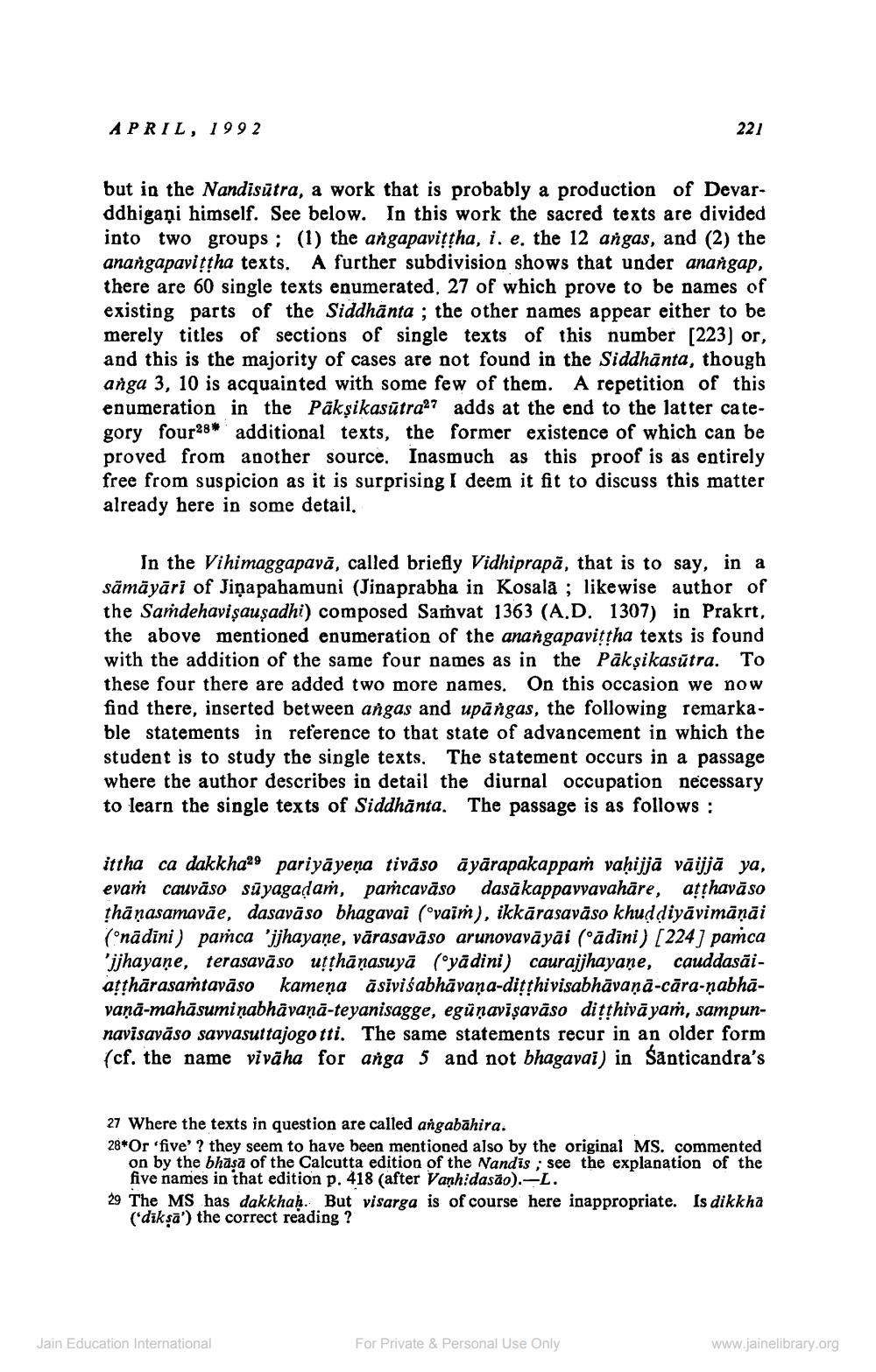________________
APRIL, 1992
221
but in the Nandisutra, a work that is probably a production of Devarddhigani himself. See below. In this work the sacred texts are divided into two groups; (1) the angapavitha, i.e. the 12 angas, and (2) the anangapaviţtha texts. A further subdivision shows that under anangap, there are 60 single texts enumerated, 27 of which prove to be names of existing parts of the Siddhanta ; the other names appear either to be merely titles of sections of single texts of this number (223) or, and this is the majority of cases are not found in the Siddhānta, though anga 3, 10 is acquainted with some few of them. A repetition of this enumeration in the Pāksikasūtraa? adds at the end to the latter category four28* additional texts, the former existence of which can be proved from another source. Inasmuch as this proof is as entirely free from suspicion as it is surprising I deem it fit to discuss this matter already here in some detail.
In the Vihimaggapavā, called briefly Vidhiprapā, that is to say, in a sāmāyāri of Jiņapahamuni (Jinaprabha in Kosala ; likewise author of the Saṁdehavişauşadhi) composed Samvat 1363 (A.D. 1307) in Prakrt, the above mentioned enumeration of the anangapavittha texts is found with the addition of the same four names as in the Pāksikasūtra. To these four there are added two more names. On this occasion we now find there, inserted between angas and upāngas, the following remarkable statements in reference to that state of advancement in which the student is to study the single texts. The statement occurs in a passage where the author describes in detail the diurnal occupation necessary to learn the single texts of Siddhānta. The passage is as follows:
ittha ca dakkha29 pariyāyena tivāso āyārapakappaṁ vahijjā väijjā ya, evaṁ cauvāso sūyagadań, pañcavāso dasākappavvavahāre, athavāso thānasamaväe, dasavāso bhagavai (vaiṁ), ikkārasavāso khud diyāvimāņāi (nādini) paṁca 'jjhayane, vārasavāso arunovavāyāi (ādini) [224] pamca jjhayaņe, terasavāso utthāņasuyā (°yādini) caurajjhayaņe, cauddasāiatthārasamtavāso kameņa āsiviśabhāvaņa-dithivisabhāvaņā-cāra-ṇabhāvaņā-mahāsumiņabhāvanā-teyanisagge, egūņavisavāso dițthivāyam, sampunnavisavāso savvasuttajogo tti. The same statements recur in an older form (cf. the name vivāha for anga 5 and not bhagavai) in Santicandra's
27 Where the texts in question are called angabāhira. 28*Or 'five'? they seem to have been mentioned also by the original MS. commented
on by the bhāsā of the Calcutta edition of the Nandis ; see the explanation of the
five names in that edition p. 418 (after Vanh:dasão).-L. 29 The MS has dakkhah. But visarga is of course here inappropriate. Is dikkha
('dik sā') the correct reading ?
Jain Education International
For Private & Personal Use Only
www.jainelibrary.org




